Japanese Art Truck Scene
Posted in: Uncategorized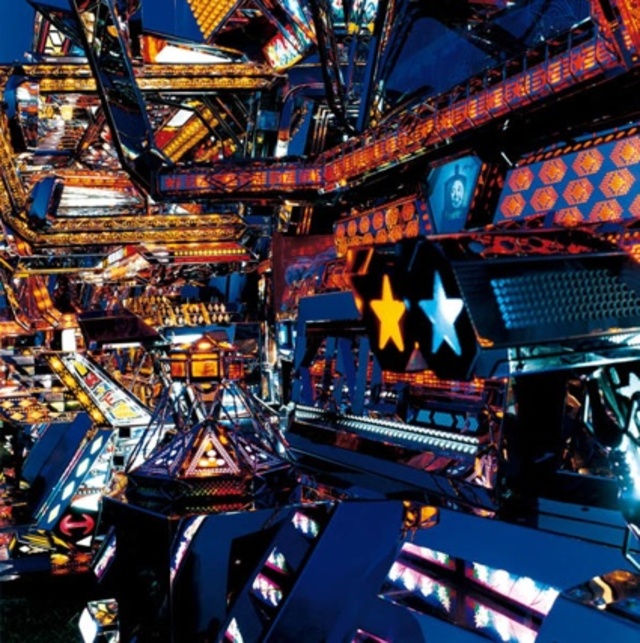

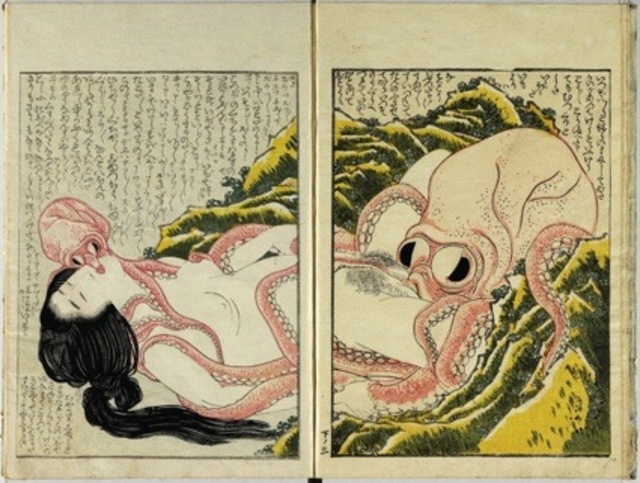
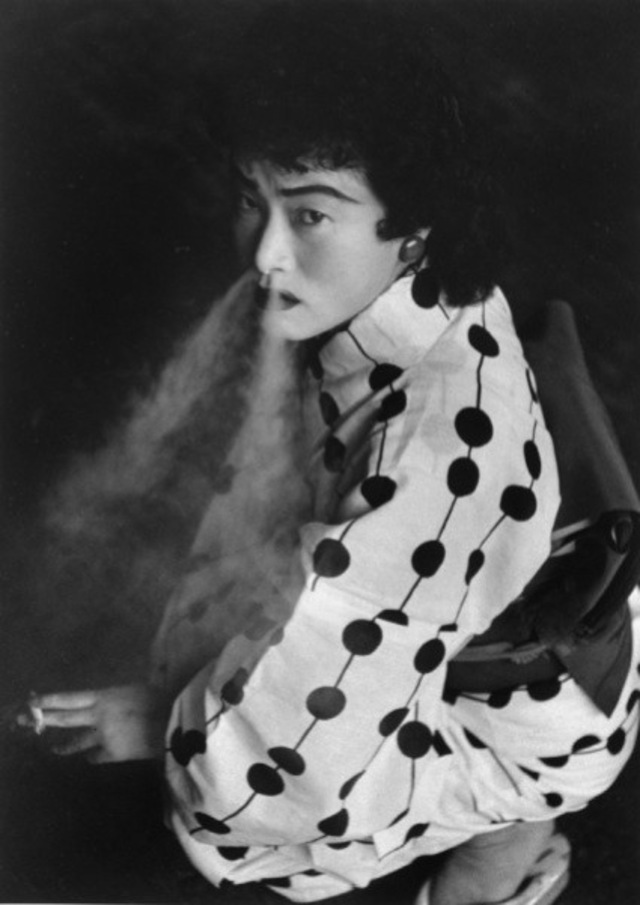
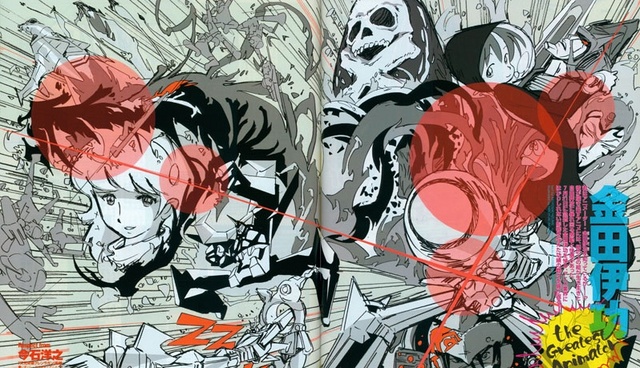
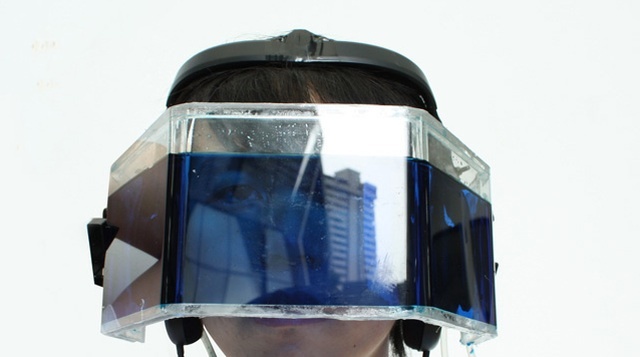
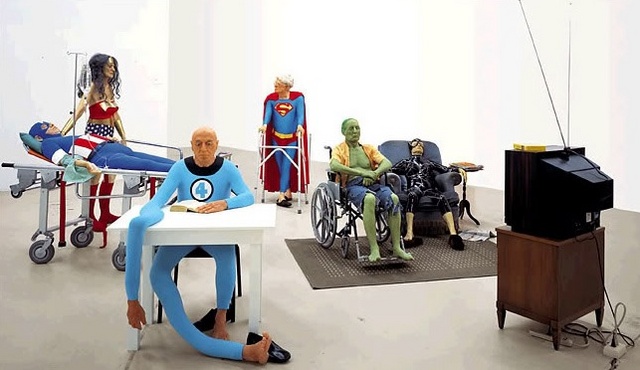
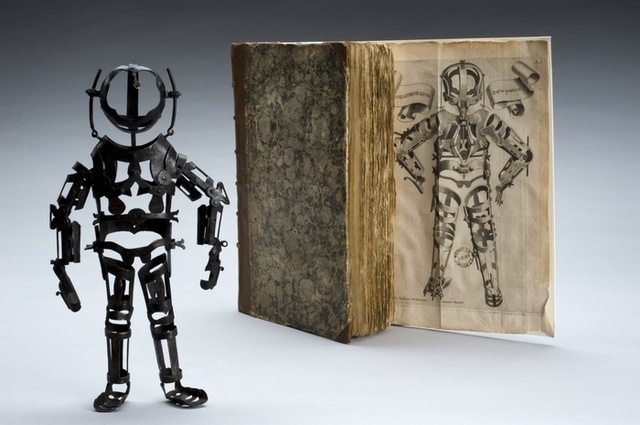
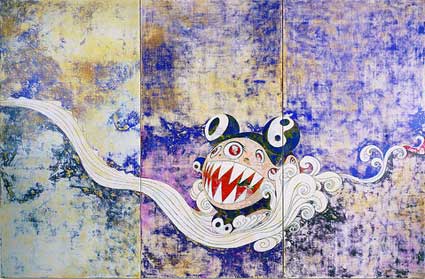
727, 1996. Courtesy of Tomio Koyama Gallery, Tokyo and Blum & Poe, Los Angeles. ©1996 Takashi Murakami/Kaikai Kiki Co., Ltd. All Rights Reserved
Is there anyone left in this room who doesn’t know how much i like Takashi Murakami (and his Kiki character)? Is there anyone who doesn’t like his work? Or doesn’t like to loathe its shallowness?
Now that i’m back in Europe (Yeah!), the usual programme will resume and start with Takashi Murakami retrospective at the Brooklyn Museum. I’m not going to bore everyone with a review of the show, just a few facts i discovered and images you’ve probably already seen everywhere.
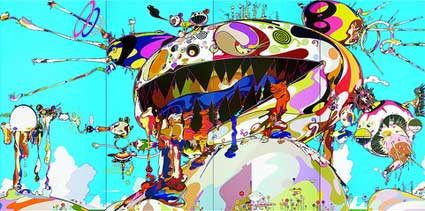
Tan Tan Bo Puking – a.k.a. Gero Tan, 2002. Collection of Amalia Dayan and Adam Lindemann. Courtesy of Galerie Emmanuel Perrotin, Paris and Miami. ©2002 Takashi Murakami/Kaikai Kiki Co., Ltd. All Rights Reserved.
– Murakami’s company/factory/collective is called Kaikai Kiki which means elegant or strange or bizarre phenomena. The term was used in the 16th century by critics to describe the work of painter KanÅ Eitoku as brave, powerful and yet keenly sensitive.
– Kaikai and Kiki are the pink and white stars of a new animation. They travel the world in a living spacecraft, watch as nasty monsters are turned into poop by a mighty princess and learn how to grow watermelons. Trailer:
– One of the reasons why Murakami is dubbed “the Japanese Warhol” is because he plays with the idea of blurring the commercial with the artistic. Not that he needs money to pay his rent, his Lonesome Cowboy sculpture recently sold at an auction for $15.1 million, nearly four times its $4 million high estimate. Aaanyway, Murakami did what even Warhol hasn’t done: he installed a fully functioning Louis Vuitton shop right inside the museum.
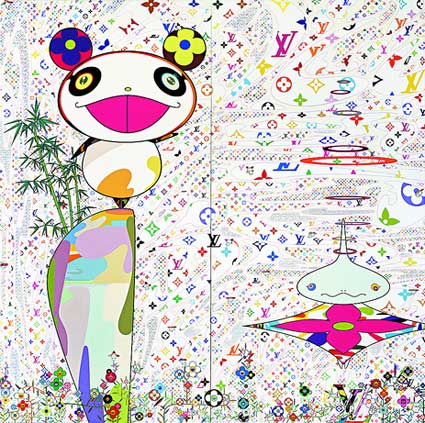
The World of Sphere, 2003. Courtesy of Marianne Boesky Gallery, New York. ©2003 Takashi Murakami/Kaikai Kiki Co., Ltd. All Rights Reserved
– The artist re-appropriated the LV logo in the painting The World Of Sphere in 2003.

Super Nova, 1999. Fractional and promised gift of Vicki and Kent A. Logan to the
collection of the San Francisco Museum of Modern Art. Courtesy of Marianne Boesky Gallery, New York. ©1999 Takashi Murakami/Kaikai Kiki Co., Ltd. All Rights Reserved
– The 18th century handscroll Compendium of Vegetables and Insects by ItÅ JakuchÅ« (detail) inspired the 7 panels of Murakami’s catalog of mushrooms. But the mushroom that most troubles Murakami is the atomic one.
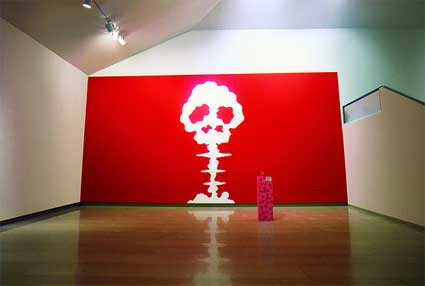
Time Bokan, 1993. Courtesy of the artist. ©1993 Takashi Murakami/Kaikai Kiki Co., Ltd. All Rights Reserved
– For a guy who siphoned classical painters, Disney characters, mangas and everything in between he is effing obsessed with copy rights.
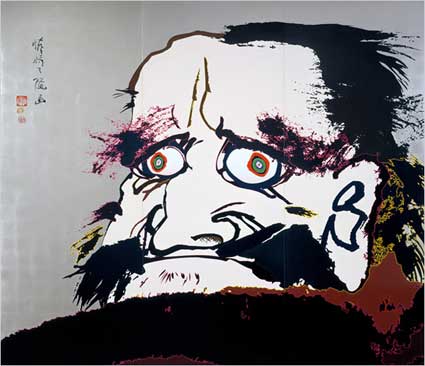
That I may time transcend, that a universe my heart may unfold (2007). Takashi Murakami/Kaikai Kiki Company, courtesy Gagosian Gallery
– Murakami has started making portraits. The museum is showing two paintings of r Bodhidharma, the sixth-century monk credited to have introduced Zen Buddhism to China.
There are numerous videos about Murakami on you tube, my favourite so far is this extract of one episode of Ben Lewis’ art safari tv series:
Followed closely by Jonathan Ross’ interview of the artist on Japanorama.
The New York Times has more images.
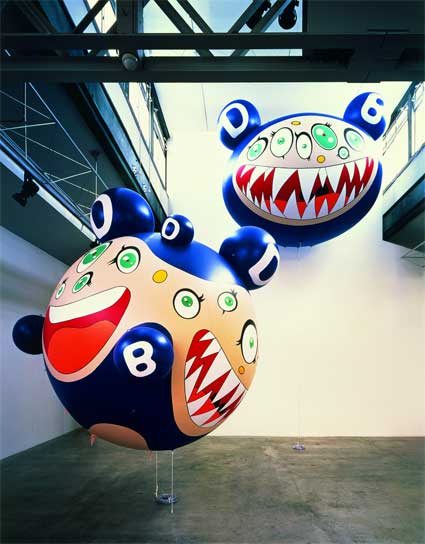
Installation view of Crazy Z, DOB’S MARCH (1995) and Forest of DOB (1995) at SCAI The Bathhouse, Tokyo. Photo by Norihiro Ueno. Courtesy of SCAI the Bathhouse,Tokyo; Galerie Emmanuel Perrotin and Tomio Koyama Gallery. ©1995 Takashi Murakami/Kaikai Kiki Co., Ltd. All Rights Reserved
The Takashi Murakami retrospective runs until July 13 at the Brooklyn Museum in New York.
Notes from the Re-Imagining Asia exhibition at The House of World Cultures in Berlin. The exhibition and other events, curated by Wu Hung and Shaheen Merali, examine how contemporary artists around the world re-invent the image we might have of Asia and the way in which the post-colonial production of knowledge is challenging Euro-centric concepts of art.
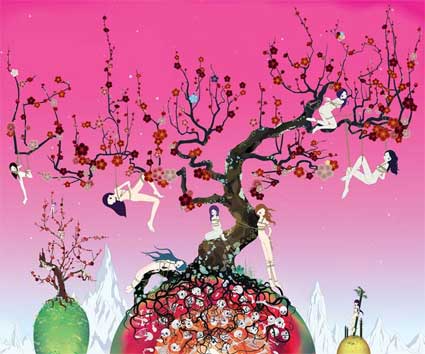
Chiho Aoshima, Japanese Apricot 3 – A pink dream, 2007. (bigger version Galerie Emmanuel Perrotin)
Asian art has reached a point where it is almost too hot to handle. New museums and art biennials are popping up all over the continent, the price paid to get a piece of Chinese art are going through the roof and Indian paintings and installations are exhibited all over Europe. Asian art is now so hype that one might think that another exhibition will just kill the enthusiasm. Well, this one won’t. The works on show have not been selected for the artists’ origins but for their focus on Asia as a space for the imagination. There are Chinese, Indian, Thai and Japanese artists but they are joined by Mexican, Germans and American artists.
As you enter the foyer of the House of World Cultures, you meet with Song Dong’s installation Waste Not. It is nothing else but his parents’ wooden house, which fell victim to urban planning in China. He reconstructed the house together with its entire inventory, a collection of utensils of all kinds accumulated by the artist’s mother over a period of 50 years and offering a picture of 50 years of material culture in China. It is hard to imagine how several tv sets, so many kitchen utensils, books, old shoes, toys, buckets, plastic bags, ballpoint pens, cupboards, etc could fit into the tiny dwelling.
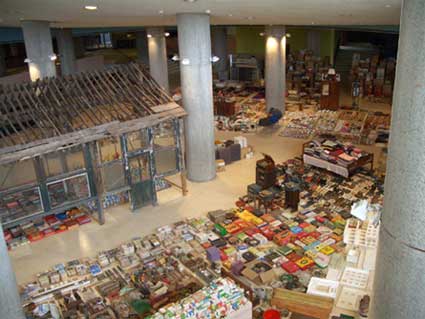
Image HKW
Song Dong grew up in Beijing. His mother taught him how to make the most of few resources, recycling, re-allocating and saving utensils for future use. The socialist motto was: ‘Waste not’. The shabby borough he lived in has been cleared away for the Olympics a few years ago, but the government neglected to replace the old houses, so there is now an empty area.
On it Song Dong would like to build another wooden house in the traditional style as a call for the preservation of old Beijing.
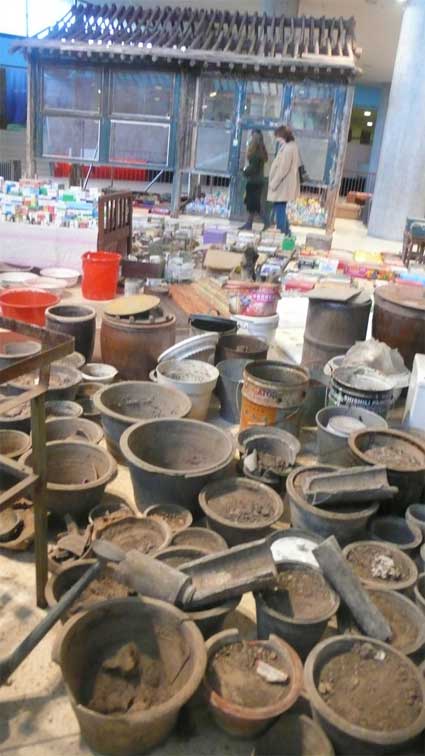
Besides offering visitors a picture of Beijing life, the installation has relieved his mother of the dead weight of half a century and has done so without making her feel that her hoarding was futile. In fact she fulfilled the role of an artist herself by preparing the show. And each of her mundane and utilitarian objects has been elevated to the status of artwork.
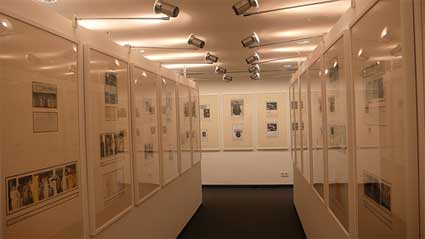
View of the installation at HKW

Chairman Mao at Xiyuan Airport, Beijing, March 1949*, 45″ x 25″, Ed. 19, digital c-print, 2006
Zhang Dali‘s “A Second History” was probably the work i found most fascinating. It’s a collection of copies of Mao-era doctored “official” photographs paired with the unaltered originals.
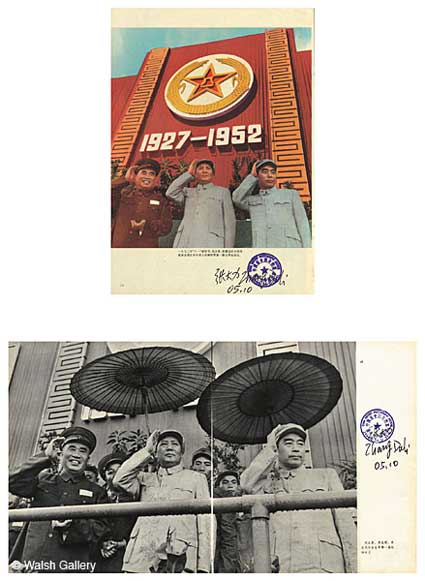
The First Sports Meeting of the National Army, 1952*, 45″ x 25″, Ed. 19,
digital c-print, 2006
The work presents an “archive of the Chinese Revolution” in 3 parts: Mao and the Revolution, Heroes and the Masses, People’s Pictorial Archive. By presenting side by side unaltered photographies from original negatives and the images as they appeared in the media at the time, the installation shows how deliberate distortion of images became an essential mechanism of photo production, a way to satisfy a yearning for an idealized image and a propaganda tool. Long before the arrival of computer and photoshop. The methods used in the editing of these images involve mainly painting: a wrinkle between Mao’s eyebrows vanishes, superfluous figures in the background are erased. (more images of Zhang Dali.)
And in no particular order:
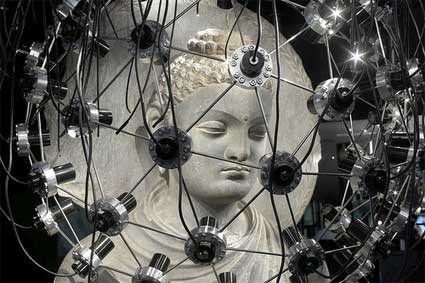
Michael Joo, Bodhi Obfuscatus (Space-Baby), 2005. Photo: Tom Powel Imaging
The Bohdi Obfuscatus (Space Baby) by Michael Joo embodies perfectly the tensions and harmonies between novelty and tradition. In an homage to Nam June Paik, Joo borrowed a Korean Buddha from a local shrine and encased it in a halo of surveillance cameras, Fiber-optic lights cast projections onto flat TV screens while mirrors, mounted on poles that surround the sculpture, reflect images from the video displays, the Buddha sculpture and visitors as they walk around the installation.
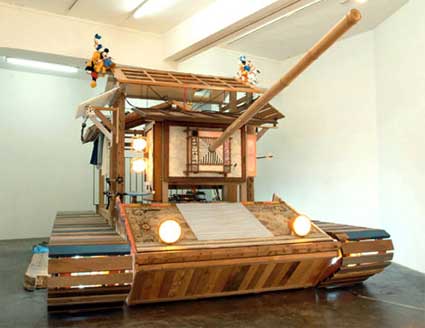
Ozone – So Provided by Mizuma Art Gallery. Courtesy of Munteru
Ujino Muneteru was in the house two. I only got to see the Ozone – So installation, a wooden temple turned into a tank and adorned with waste material, such as electric appliances, plush toys, bits of carpet, building materials and books collected around Tokyo by volunteers.
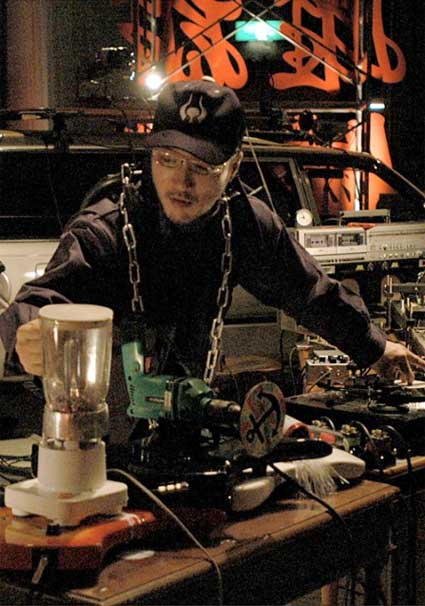
There was also the video of a musical performance Muneteru gave in Berlin. He played with blenders, hair dryers, parts of bicycles, used vinyl discs, turntables, not only was it fascinating to see him handle all this junk but it also sounded surprisingly good.
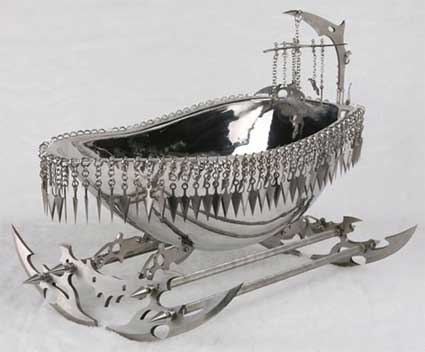
Shi Jinsong, Na Zha Cradle, 2005
Shi Jinsong‘s razor-sharp line of baby products include a militarized Carriage, a sadistic Cradle and a predatory Walker. Na Zha Baby Boutique (Na Zha is a child warrior deity in Chinese mythology) tries to lure “shoppers” using stainless steel “products” which evoke both luxury and danger.
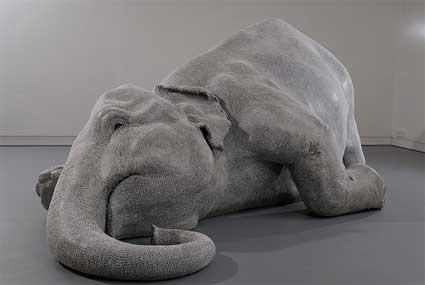
Bharti Kher, The Skin Speaks a Language Not Its Own, 2006. Photo credit:Pablo Bartholomew/Netphotograph.com
Bharti Kher’s bindi-on-fiberglass elephant. The bindi in India is traditionally a mark of pigment applied to the forehead of men and women and is associated with the Hindu symbol of the ‘third eye’. When worn by women in red, the bindi symbolises marriage. In recent times it has become a decorative item, worn by unmarried girls and women of other religions.
Bharti Kher covered her sculpture of a dying elephant in white bindi. The elephant is often regarded in Asia as a symbol of dignity, intelligence and strength. Kher marries the elephant and the bindi to contemplate the effects of popular culture, mass media and consumerism on the culture of India.
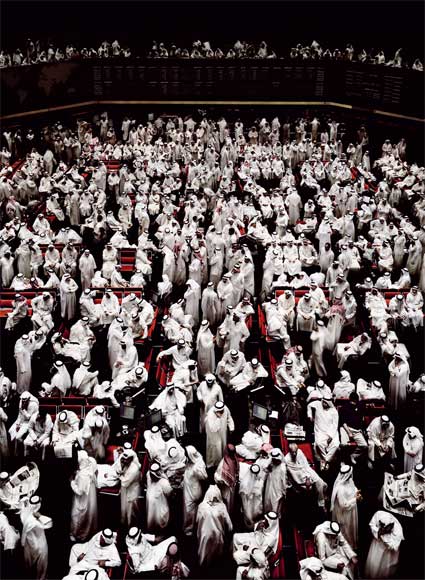
Andreas Gursk, Kuwait Stock Exchange. © Andreas Gursky / VG Bild-Kunst, 2007

Miao Xiaochun, Orbit, digital c-print, ed. of 3, 2005, 85.5″ x 189″ (bigger version of the image)
I took a few pictures. Universe in Universe has more images of the show.
Related: Chiho Aoshima, Mr. and Aya Takano in Lyon.

Tokyo correspondent Vicente Gutierrez paid a visit to the Yokohama Museum of Art last month to check the exhibition Goth – Reality of the Departed World . Here’s what he has to say about it:
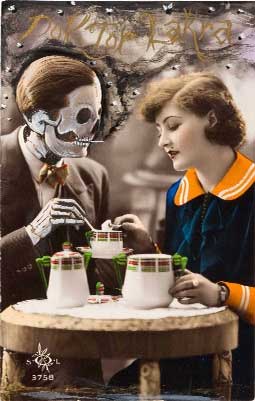
Dr. Lakra, Untitled (Muscidae and Tea), 2007. Courtesy of the Artist and Kurimanzutto, Mexico City
Unmistakably, Goth-culture has emerged from centuries ago back into the fore of 21st century life. While the noir-drenched subculture’s origins are rooted in the aesthetics of the “gothic” art movement which permeated Europe from the 12th to 16th centuries, Goth imagery and iconography and fashion we see today is more connected to the 19th century British revival movement which entertained a longing for medieval times.
The Goth culture of today, found in movies, music, fashion and literature, is influenced more by the revival movement and hinges on darker, yet familiar, concepts of death, darkness or night, abnormality, insanity and just about anything that is opposed to a healthy and conservatively-perceived status quo. And so, the youth, pop-culture as well as contemporary art have been infected with notions of Goth. Whether it be Marylyn Manson’s baroque stadium tours, a noir-revival in film or artists who explore death, deformation of the body or self-identity, these attempts break through the norm of the status quo.
The exhibit at the Yokohama Museum of Art featured approximately 250 works of contemporary sculpture, painting, video and photography by six internationally active artists to cite a new working definition of ‘Goth’ in a contemporary setting.
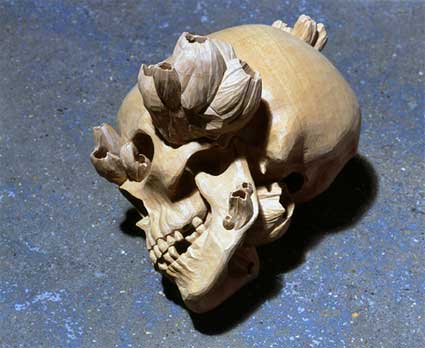
Ricky Swallow, Younger Than Yesterday, 2006
Collection of Ms.Tiqui Atencio Demirdjian
Shown in Japan for the first time, the detailed, wooden sculptures of Ricky Swallow [Australia] juxtapose vanity and death with the use of skull iconography in this work. Even though skull iconography seems to be everywhere as of late, Swallow also displayed a delicately wood carved skeleton with so much invested work that it seemed human. Each bone, while carved and pieced together delicately to replicate the raw, natural human form, echoed of [human] flaws. The composed, docile macabre posed in the center of the room, with an enigmatic chagrin. In addition to his woodcarvings, Swallow’s sculpture of a bronzed vintage boom box further expressed the artist’s concern with the flow of time, whether in cyclical or standstill. To preserve what we love despite beauty’s transience, knowing it will ultimately die, reminds us of the brevity of life and the tragically comforting adage, that nothing lasts forever.
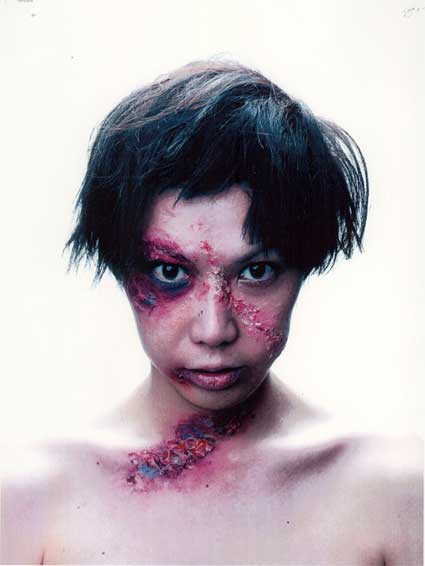
Pyuupiru, Selfportrait #02 A 12-year-old Boy Bearing Scars, 2005-07
Spanning the wall of the exhibit space were Pyuupiru‘s collection of self-portraits which featured the artist with a variety of dramatic, mutilated poses. Appearing androgynous at times, self mutilation and modification were the tools the artist has taken to find her true self in hopes of actualizing her value as a person- psychologically and physically. With the progression of photographs, perhaps Pyuupiru is awaiting a final metamorphoses. How long? Remains a question for the viewer and artist alike. Here, the photos are said to present the process of transformation from man to woman and from a monster to a total self. The incision, modification and mutilation of her physical self seem not to deflect her bold and persistent gaze at the camera- what appears fragile on the surface is not. Rather, in exploring her self identity, her search for true-self is nihilist although a longing for a perfect love of self is detectable.
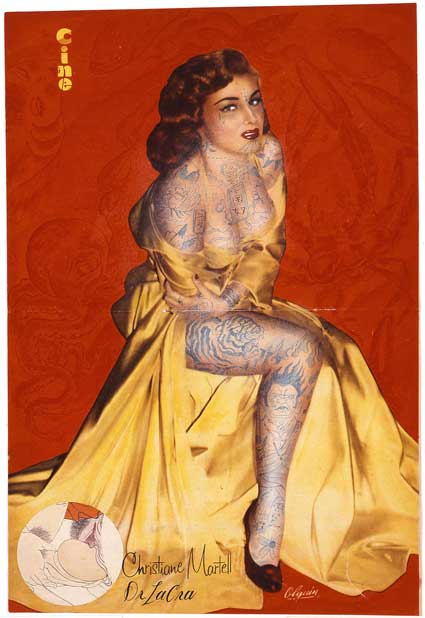
Dr. Lakra, Untitled (Love, Christiane Martell), 2007
Courtesy of the Artist and Kurimanzutto, Mexico City
Comfortable in his technique, tattoo artist Dr. Lakra [Mexico] used vintage Mexican magazine covers (featuring pin up girls and wrestlers) as canvas for his permanent ink. While some of his exhibited works were completed during his residency at the Yokohama Museum of Art Common, Lakra’s concerns with death led him to rely on dark iconography such as demons, bats, insects, spiders and gothic patterns which are intertwined with the beautification of the very figures he draws upon. The darker image of Lakra maintains as beautiful literally overwrites original perceptions of these vintage cover models; shunning the original conventions. Lakra’s subversive obsession with kitsch beauty and death is perhaps strongly correlated to his up brining in Catholic-heavy Mexico, where such conservative ideas pervade. Continuing to mix the sacred and the secular, Lakra’s resistance to an overarching conservatism is clear.
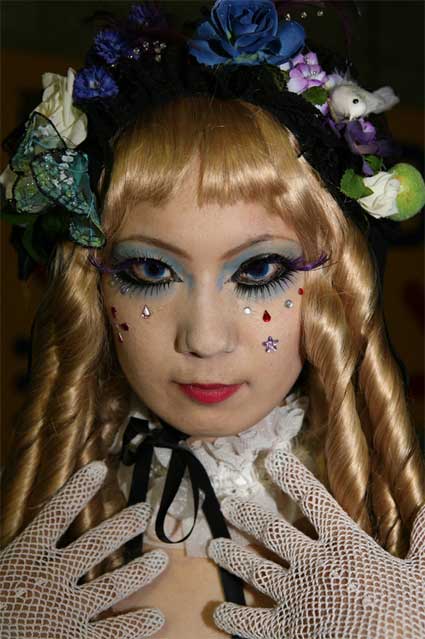
Masayuki Yoshinaga, Goth-Loli (Gothic Lolita), 2006
Masayuki Yoshinaga’s [Japan] massive archive of street photos of modern day Goth youth, reveal the culture’s current vitality. In this collection of photos, Goth iconography is seen translated in a variety of ways- the lolita dresses pervade, as does heavy, aesthetically-driven make up in addition to teeth actually sharpened into a set of fangs. Another stronger body modification, for the truly committed goth, were triangle slits into tongues for a vampire or serpent effect. Yoshinaga’s lens focuses on the more colorful and vibrant tangent off the Goth tradition- youth who’s obsessive concentration on their subculture suggests a darker, clouded periphery. That is, all else, i.e. values of the status quo, are meaningless. In order to capture such vanity, Yoshinaga elects subjects who wear their heart on their sleeve, no matter how dark it may be.
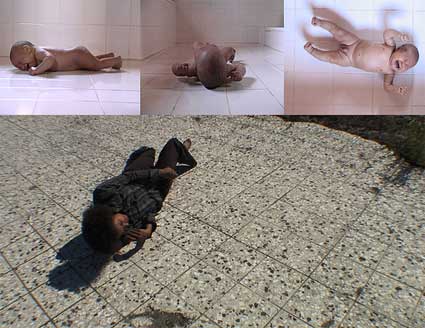
IngridMwangiRobertHutter, Performance of Doubt, 2007
For this exhibition, a new video installation was created around the theme of human life, which the artists symbolized through birth, maturity and aging. One video, focused on multiple angles of an infant, simply laying on a cold, tiled floor unable to move or walk. In its peril, the infant managed roll over, all the while crying, for some kind of salavation. Is there something beautiful in this or do we file it under morbid? Concerned with conditions of human existence, IngridMwangiRobertHutter‘s videos provide introspection into moments we opt, and opt not, to remember or avoid confronting but nevertheless expected in our life span. Moreover, how do we deal with the violence, injustice and consequent endemic suffering in our world? Other projected clips focused on an older individual going through suffering, as if surviving a failed suicide attempt from a buildling as well as an elder patient anxiously awaiting in a clinical room.
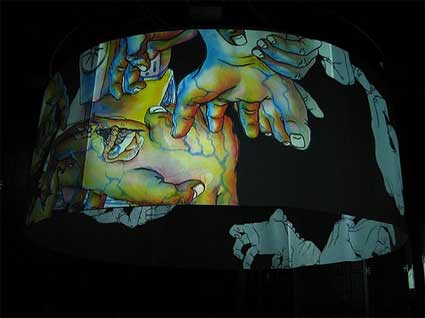
Tabaimo, Ginyo-ru(guignoller), 2005
Courtesy of the Artist and Gallery Koyanagi. Photo: Ufer! Art Documentary
In a darker room, Tabaimo’s large format 360 degree video installation, raised to the ceiling, presented an inner imaginative world where severed hands and feet floated in an interstitial space within the circular canvas. The looped animated sequence revealed a fluid morphing and mutilation of body parts into and out of each other. More fascinating than disturbing, closer attention to the enigmatic evolution of the floating limbs, garnered Tabaimo’s individual aesthetic as an animator.
From this collection of contemporary works, Goth is clearly moving onto a wider platform. It is not only the style or the fashion, but rather a means to communicate profound ideas of life, whether those be painful or sorrowful or morbid, they are messages with the same importance and relevance of those found in pop art, or other avenues of pop culture. And on such a platform, these contemporary artists will continue their reflections on birth, death and the transformations that come in between.
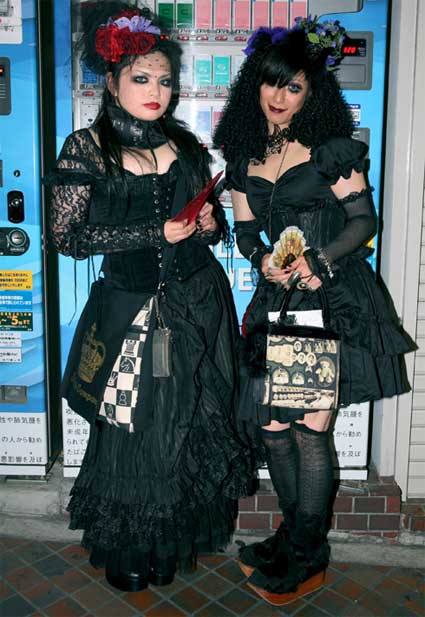
Masayuki Yoshinaga (more images)
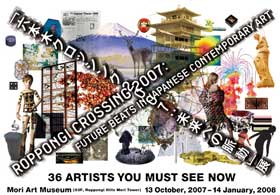 Postings will be slow as i’m currently running from one exhibition to the other in Lyon, Brussels, Gent, etc. and visiting my family and friends around. Normal service will resume on December 27. Meanwhile, Vicente Gutierrez visited yet another Tokyo art exhibition and sent us a report from it:
Postings will be slow as i’m currently running from one exhibition to the other in Lyon, Brussels, Gent, etc. and visiting my family and friends around. Normal service will resume on December 27. Meanwhile, Vicente Gutierrez visited yet another Tokyo art exhibition and sent us a report from it:
A follow up to the 2004 version, the 36 artists featured in Roppongi Crossing were selected by a team of four curators to introduce new emergent talent from Japan while juxtaposing such work alongside influential Japanese artists from the formative decades of the 1960s and 1970s. With both group’s work spanning the spectrum of painting, sculpture, design, video, photography, manga as well as a side of traditional craftwork [with the deliberate exception of architecture and fashion], this exhibit is meant to take the pulse of the Japanese contemporary art scene.
That this team of curators brought them together for this exhibit raises a question- What unites these artists? Is there a kind of Japanese-ness that acts as a gravity? Roppongi Crossing is another high-profile exhibit grouping Japanese artists in recent months which leads me to believe it is curators who have been more focused on asserting a unifying sense of Japanese-ness in the contemporary scene rather than the artists themselves. Meanwhile, younger artists have found themselves confronted with a choice to perceive this Japanese-ness as a unifying theme or as a departure point for themselves.
Some selections on exhibit until January 14, 2008:
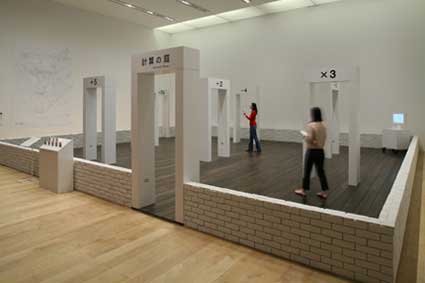
Sato Masahiko + Kiriyama Takashi, Arithmetik Garden 2007. Photo: Kioku Keizo
Sato Masahiko and Kiriyama Takashi employed RFID technology into an interactive installation whereby participants select a card with a number on it to hang around their neck, essentially becoming a number themselves. Each card is embedded with an RFID chip and participants must pass through the various gates in the mathematical garden with the goal of attaining the total of 73 via various math operations before [successfully] exiting. The computer in the corner tracks user’s steps as well as their current “number.â€
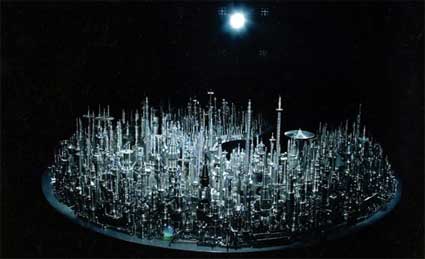
Enoki Chu, RPM-1200, 2005. Hirakakiuchi Yuto courtesy of Mori Art Museum.
Viewable from within the center or from a recessed observation deck, RPM-1200 [2005] by Enoki Chu is a futuristic cityscape characterized by highly detailed craftwork with [scrap] metal. Popular since the 1960s, the veteran metalsmith crosses his highly detailed craftsmanship with a scaled-down design installation of an urban landscape right out of a science fiction film.
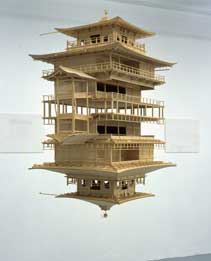
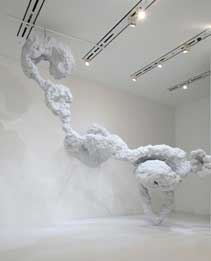
Iwasaki Takahiro, Reflection Model, 2001. Photo: Tomoeda Nozomi and Nawa Kohei, Scum-Compulsion, 2007. Photo: Kioku Keizo
The traditional side of the exhibit emerges from this meticulously constructed scaled-down replica of the much-revered Kinkakuji temple [and it’s reflection, slightly offset for refraction] in Kyoto by Iwasaki Takahiro. Iwasaki’s exercise of restraint and good taste at the same time allows us to see a side of Japan’s orderliness and cleanliness in presentation. Meanwhile, Nawa Kohei’s amorphous sculptures command whatever room they are in, an embodiment of chaos in sculpture. While what is abstract makes deciphering more difficult, Nawa Kohei’s sprawl of white styrofoam is set alongside Kito Kengo’s colorful, spinning hypnosis-inducing polyhedron.
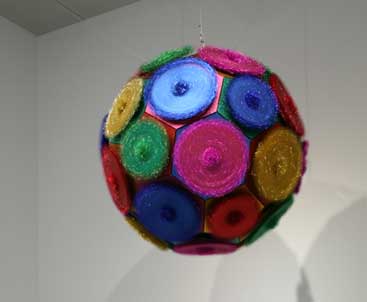
Image on the right: Kito Kengo, Royal, 2007. Photo: Kioku Keizo
Entitled Royal, Kito’s colorful and vibrantly visual polyhedron is equipped with small propeller blades and although quietly humming, draws more attention from our eyes than our ears. That their works were intentionally juxtaposed radically reminds us of the varied directions within the younger camp of emergent artists.
Yamaguchi Takashi’s algorithm-based interactive models place us in a new environment where we question the effects of our behavior and perceptions of [virtual] data. Centered around a generative-code program, the featured physical-interaction-digital-realization, interactive model pits two drummers against each other in a virtual space where a grounded colorful grid modulates while each drummer plays.
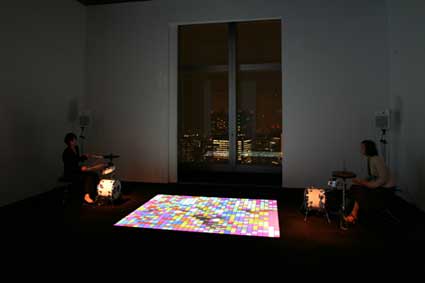
Yamaguchi Takashi, d.v.d.
Roppongi Crossing exhibit does say a lot about what these four Japanese curators will label as Japanese ‘art’ and as a survey show, the grouping of the 36 artists seemed to result in more fractions than a complete image. Perhaps a more apt title for the exhibit would be questioning what is ‘Japanese-ness’ is Japanese contemporary art- Where do young artists think they are coming from and going which may paint a clearer picture of the Japanese contemporary art scene, although, before we know it, will be time for the next Roppongi Crossing.
All images Courtesy of Mori Art Museum
“Roppongi Crossing 2007 — Future Beats in Japanese Contemporary Art”
Until Jan. 14 2008 at the Mori Art Museum in Roppongi Hills, Tokyo.